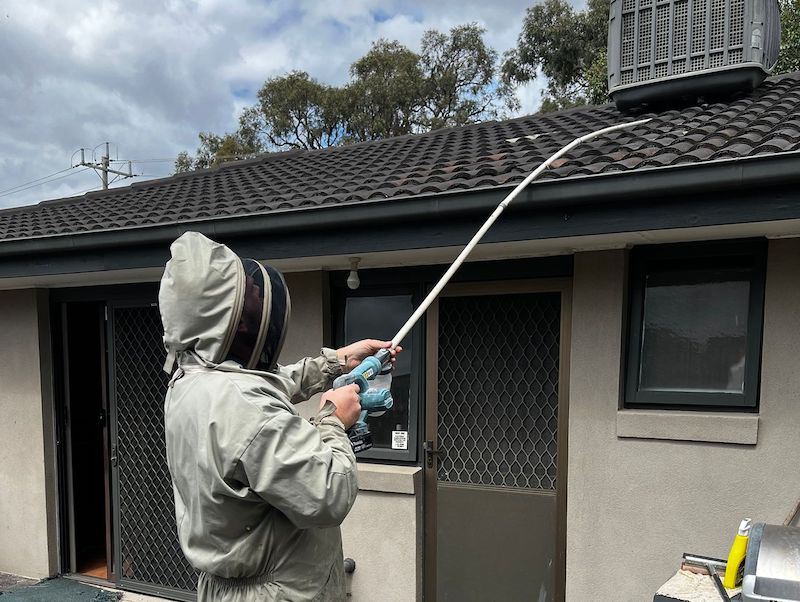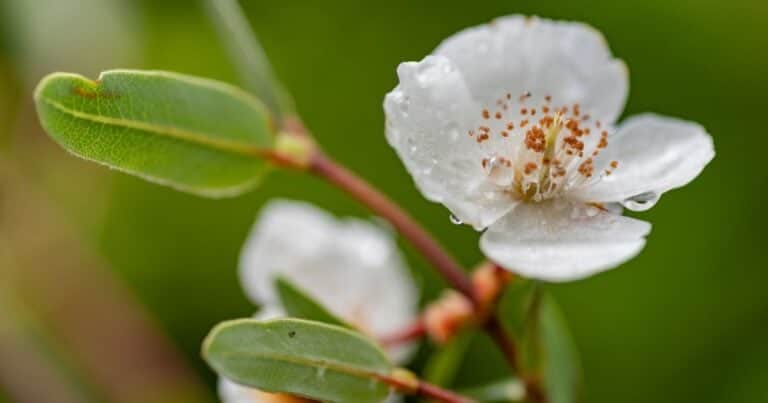Giant Wasp Nest Australia
It was the summer of 2014-15, when Simon Fearn, of the Queen Victoria Museum and Art Gallery in Launceston, Tasmania, discovered the location of a potentially record-breaking second-year European wasp nest in the central north of the state.

The entrance holes spanned 1.5 metres of creek bed; there was a dense plume of wasps continually entering and exiting the nest and the ground nearby literally vibrated under Simon’s feet.
Clearly, eradication of the wasps while attempting to preserve the nest as a future exhibit would be an extremely perilous undertaking and one that would require careful planning.
After consultation with the property owner, Jim Dowde, Simon decided to wait until the cover of darkness, and then block off all but one of the larger entrances; a large can of six-month cockroach spray was to be discharged down the remaining entrance, followed by a strategic withdrawal!
Unfortunately, the wasps became extremely agitated by the torchlight,
and Simon’s foot broke through the soil into an outer portion of the nest, unleashing a furious response that saw him stung six times and eliciting a hasty retreat.
After a half-hour break, Simon pressed home the attack and deployed the cockroach spray, whereupon ‘an ominous and frenzied buzz erupted from the bowels of the earth’! The situation was compounded by the existence of several hidden entrance holes under the overhanging creek bank, together with an undetected portion of the nest that actually protruded from the ground amidst the blackberries.
After suffering several more stings, Simon decided upon another break, during which he consumed some ‘industrial strength antihistamines’.
Finally, he returned to the nest to set off a flea bomb, which was shoved into the remaining entrance, before retiring for the night.
It was hoped that the colony would succumb to this barrage, but the next morning a column of wasps was observed streaming in and out of the nest; the resilient insects had even managed to open up new entrance holes. Simon drove back to town to purchase some ant and wasp powder, which was generously applied to all remaining entrances. Finally, by late afternoon on the second day, the colony was silent.
The following day, Simon and Joe, still smarting from stings, began the task of excavating the nest intact. This was made easier by the sandy soil and a complete lack of rocks or tree roots. Once exposed, the giant nest was found to resemble in shape an armchair with the armrests missing. It measured 1.1 metres tall (at the back), 1.28 metres long and 1.22 metres wide, with a volume of just over 0.6 cubic metres. In order to remove the nest from the creek bed a makeshift sling was constructed from a tarpaulin.
Four people were required to lift the nest, the weight of which was conservatively estimated to be around 90 kilograms. With the assistance of an excavator, the nest was duly loaded onto a ute and taken to temporary accommodation in a shed in Launceston to dry out. Incredibly, thousands of partially-poisoned wasps continued to emerge from their pupal chambers for several weeks afterwards this activity only ceased when the nest was eventually transferred to a freezer!
The huge nest was indeed a subterranean record, surpassing anything documented around the globe. It remains a fascinating exhibit at the Queen Victoria Museum and Art Gallery, and if you’re ever in Launceston (like I was recently on a family holiday) I strongly encourage you to check it out.
Interestingly, Simon identified several factors which he believed were instrumental in the nest achieving such a prodigious size. The substrate was soft and free from obstacles, making it easy to excavate; the site was sunny on a northeast-facing slope; and the previous winter had been particularly mild, thereby assisting the colony’s survival. In addition, a massive oak tree located only 70 metres from the nest was covered in the scale insects that produce honeydew. This would have represented a rich and easily accessible food source for the wasps.
Thankfully, European wasp nests do not appear capable of surviving beyond a second year, probably because their sheer size makes them unsustainable.
However, nests like this one may become more commonplace with the effects of climate change, and that would be a cause for a real-life disaster movie!
See also:
Fearn, S., Dowde, J. and Maynard, D. 2015. Record sized perennial subterranean nest of the introduced European wasp Vespula germanica (Hymenoptera: Vespidae: Vespinae) in northern Tasmania. The Tasmanian Naturalist 137: 49-56.
Fearn, S. 2016. A Sting in the Tale; Recovering the World’s Biggest Underground European Wasp Nest. Scales & Tails 46: 38-43.


